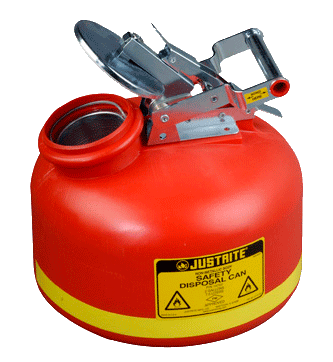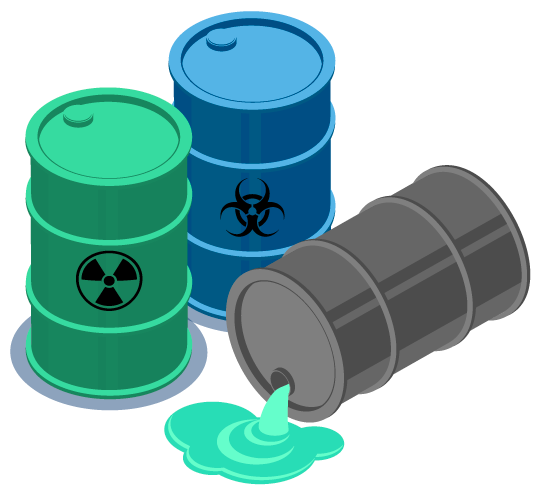Comprehensive Liquid Waste Disposal: Solutions for Residences and Businesses
Comprehensive Liquid Waste Disposal: Solutions for Residences and Businesses
Blog Article
Just How Liquid Waste Disposal Works: A Comprehensive Summary of Techniques and Technologies Employed

Review of Fluid Waste Types
The intricacy of liquid waste kinds necessitates a thorough understanding of their attributes and ramifications for disposal. Fluid waste can extensively be classified into a number of kinds, including commercial, municipal, agricultural, and contaminated materials. Each category displays distinctive residential properties, requiring particular administration approaches to reduce ecological and wellness risks.
Industrial liquid waste stems from making procedures and frequently consists of a variety of contaminants, such as heavy metals, solvents, and natural substances. Municipal liquid waste, mainly making up wastewater from families and commercial establishments, has organic issue, nutrients, and virus (industrial wastewater treatment). Agricultural liquid waste, including overflow from farms, may consist of plant foods, chemicals, and animal waste, posturing risks to water quality and communities
Unsafe fluid waste is identified by its poisoning, sensitivity, or prospective to trigger damage. This classification includes substances like acids, bases, and certain chemicals that necessitate stringent handling and disposal protocols. Recognizing these varied fluid waste types is vital for establishing efficient disposal methods and guaranteeing compliance with ecological laws. Appropriate classification and characterization are important for executing appropriate therapy methods and lessening the unfavorable effect on public wellness and the setting.
Physical Treatment Approaches

Testing is the preliminary step, where bigger bits and particles are gotten rid of from the liquid waste using screens or grates. In sedimentation storage tanks, larger fragments resolve at the bottom, forming a sludge layer, while the made clear liquid can be further dealt with.
Filtration is an additional crucial technique that involves passing the fluid through permeable materials, such as sand or membrane layers, to catch smaller sized bits. This action improves the top quality of the liquid, making it appropriate for succeeding therapy procedures.

Chemical Treatment Techniques
Chemical treatment methods are essential for effectively managing liquid waste, specifically in resolving dissolved and colloidal impurities that physical methods may not appropriately get rid of. These techniques make use of various chemical representatives to reduce the effects of, speed up, or transform dangerous substances into much less unsafe kinds.
One usual approach is coagulation and flocculation, where chemicals such as alum or ferric chloride are included in advertise the gathering of put on hold fragments. This procedure boosts sedimentation, permitting easier elimination of the resulting sludge. Additionally, oxidation procedures, employing representatives like chlorine or ozone, are employed to break down intricate natural compounds and pathogens, providing the waste much safer for discharge or more treatment.
Neutralization is one more important method, which changes the pH of acidic or alkaline waste streams to neutral degrees, preventing prospective injury to downstream systems and the environment. In addition, advanced oxidation procedures (AOPs) make use of combinations of oxidants and ultraviolet light to degrade relentless toxins, accomplishing a greater level of therapy effectiveness.
Biological Treatment Procedures
Biological therapy procedures play a crucial role in the monitoring of fluid waste by making use of microorganisms to decompose organic matter and decrease pollutant levels. These procedures can be broadly classified right into anaerobic and cardiovascular treatments, each using particular microbial communities to accomplish effective waste deterioration.
Aerobic therapy involves making use of oxygen to facilitate the malfunction of organic products by microorganisms. This procedure is frequently carried out in turned on sludge systems, where oygenation containers supply a helpful setting for microbial development, causing the oxidation of organic contaminants. The resultant biomass can be separated from dealt with effluent with sedimentation.
On the other hand, anaerobic treatment occurs in the lack of oxygen, depending on different germs to damage down natural matter. This technique is especially beneficial for visit this page high-strength waste, as it generates biogas, an eco-friendly energy source, while reducing sludge production. Technologies such as anaerobic digesters are regularly used in industrial and metropolitan applications.
Both anaerobic and aerobic organic treatments not only decrease the environmental influence of fluid waste yet also assist in resource recuperation, making them crucial parts of lasting waste monitoring strategies. Their effectiveness, versatility, and performance sustain their prevalent execution throughout various markets.
Emerging Technologies in Disposal
Ingenious strategies to liquid waste disposal are rapidly evolving, driven by improvements in technology and a boosting focus on sustainability. Among these emerging innovations, membrane layer bioreactors (MBRs) have actually acquired traction for their ability to integrate organic therapy with membrane layer purification, resulting in high-quality effluent that can be a fantastic read reused in different applications. MBRs enable smaller footprints and extra effective procedures compared to standard systems.
An additional promising development is using anaerobic digestion integrated with nutrient recuperation technologies, which not just treats liquid waste yet also produces biogas and recoups important nutrients like nitrogen and phosphorus. This twin benefit improves source performance and decreases ecological influence.
Additionally, advanced oxidation procedures (AOPs) are being resource taken on for the degradation of complex organic toxins. These approaches utilize powerful oxidants and drivers to damage down impurities at the molecular degree, offering a highly efficient option for tough waste streams.
In addition, the integration of artificial intelligence and device discovering in waste monitoring systems is maximizing functional performance and anticipating upkeep, bring about lowered costs and improved ecological conformity. These modern technologies mirror a substantial change in the direction of even more lasting and efficient liquid waste disposal practices.
Verdict
In final thought, reliable liquid waste disposal demands a detailed understanding of various methods and technologies. By continually advancing these methods, it becomes possible to resolve the growing obstacles associated with liquid waste, inevitably contributing to ecological defense and resource healing.
Fluid waste disposal is an important aspect of environmental monitoring, requiring a detailed understanding of numerous techniques and innovations customized to various waste types. Liquid waste can extensively be classified right into several types, including commercial, local, agricultural, and unsafe waste. Agricultural fluid waste, including runoff from farms, might have plant foods, pesticides, and animal waste, positioning dangers to water top quality and communities.
Different physical therapy techniques play an essential role in managing liquid waste efficiently - industrial wastewater treatment.In conclusion, reliable liquid waste disposal requires a detailed understanding of numerous strategies and technologies
Report this page